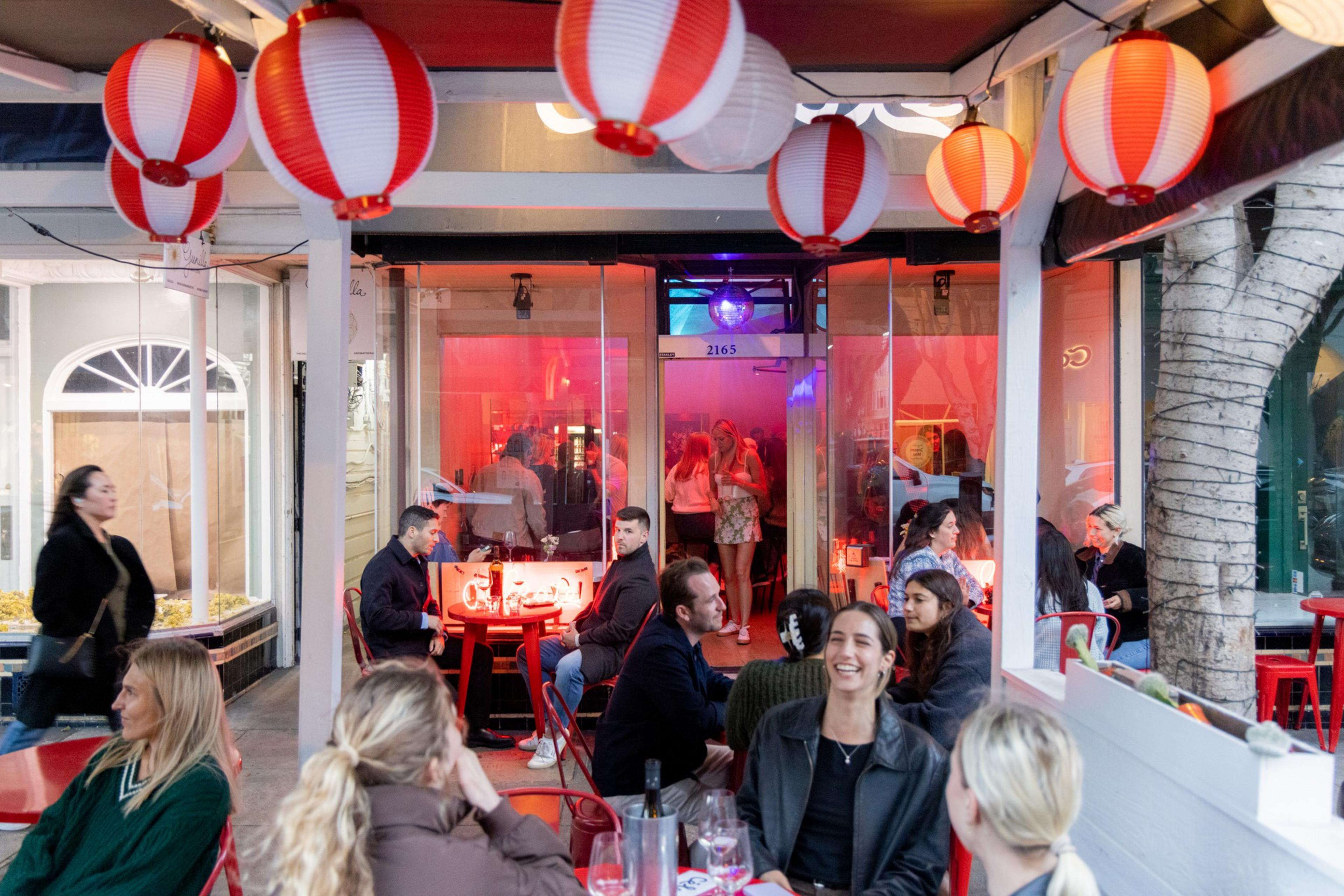If situationships are the new relationships, then San Francisco wine bars that serve great food are the new no-commitment dinner venues.
These aren’t restaurants—at least, not by the standard definition—and they aren’t just bars. Their menus go well beyond tiny bowls of Marcona almonds. They don’t require a reservation; in fact, they usually don’t accept them, making it possible to let the evening unfold spontaneously—or conclude quickly.
You might wander in to have a glass of skin-contact Albariño, only to be swept up in a swell of beef tartare and Sockeye salmon. Or you might simply go with the cheese plate. And the biggest bonus: compared to traditional restaurants, the financial commitment tends to be relatively low.
“I think part of the appeal is that they are much more casual,” says Jacon Paronyan, owner of Roaming Goat (opens in new tab) in the Marina District. “You can just show up.”

Their ranks are growing all over the city. At the trendy Bar Jabroni (opens in new tab) in the Lower Haight, customers order kampachi crudo and fettuccine with mushrooms, sweet corn and chile crisp. Komaaj Mazze Wine Bar (opens in new tab) in Bernal Heights serves Northern Iranian sweet and sour chicken stew. Key Klub (opens in new tab) near Union Square offers cast-iron mussels and a patty melt; 20 Spot (opens in new tab) in the Mission serves lamb sausage pizzas and roasted beets. And Ungrafted (opens in new tab) in the Dogpatch offers a $150 fried chicken dinner for two to four diners to share.
There’s a practical reason behind the uptick in this style of venue. Paronyan, whose wine bar serves Armenian and Georgian wines to pair with its substantial Mediterranean menu, says he initially set out to open a bistro but pivoted to a wine bar in part because of “how much you could get away with—or how little you could get away with, actually.”
Since customers don’t necessarily expect to get a full meal, he had the flexibility to expand or contract the food menu depending on how it was received. “We could do as little as a couple of bites,” he says. “We could do nuts and olives, maybe a couple of dips. And that would be okay—for a wine bar.”
Additionally, there’s a far lower barrier to entry for opening a wine bar versus a restaurant. A type 47 liquor license, which allows a restaurant to serve a menu of beer, wine and spirits, can cost about a quarter of a million dollars, Paronyan estimates. In comparison, a type 41 license, requiring the sale of food alongside beer and wine, can cost as little as $2,000. These types of licenses require businesses to “make actual and substantial sales of meals for consumption on premises,” so it makes sense for an increasing number of bars to offer substantial menus.
Lalo Luevano, who owns Bodega (opens in new tab), Key Klub (opens in new tab) and Céleste (opens in new tab) with business partner Paria Sedigh, says their three wine bars aim to offer high-quality and hard-to-find wines at an approachable price. Eliminating positions like hosts, food runners and bussers—all typical within a full restaurant—means he and Sedigh can focus more resources on connecting with small wine producers and getting their bottles on the bars’ lists. “It was like, let’s provide great products and attention to detail when it comes to service, but without all the theatrics that come with a restaurant.”
Gallery of 3 photos
the slideshow
He and Sedigh measure success in part by how long customers linger. The more they feel they can relax, the more likely they will return. And even if a customer didn’t want more than a glass of wine this time, perhaps they’ll order a plate of sliders or a burger the next time.
However, Paronyan points to the dangers of the “coffee-shop effect,” when people come in and order a single glass of wine and use the space as a hangout spot for long stretches of time. “There’s a more clear understanding at a restaurant that you sit down and it’s two hours and there are other people that have reserved the table as well.”
Plus, there’s something lovely about keeping it casual. “For us, you come in and you belly up to the bar or help yourself to whatever table you want,” Luevano says. “Then we’ll take care of you.”



